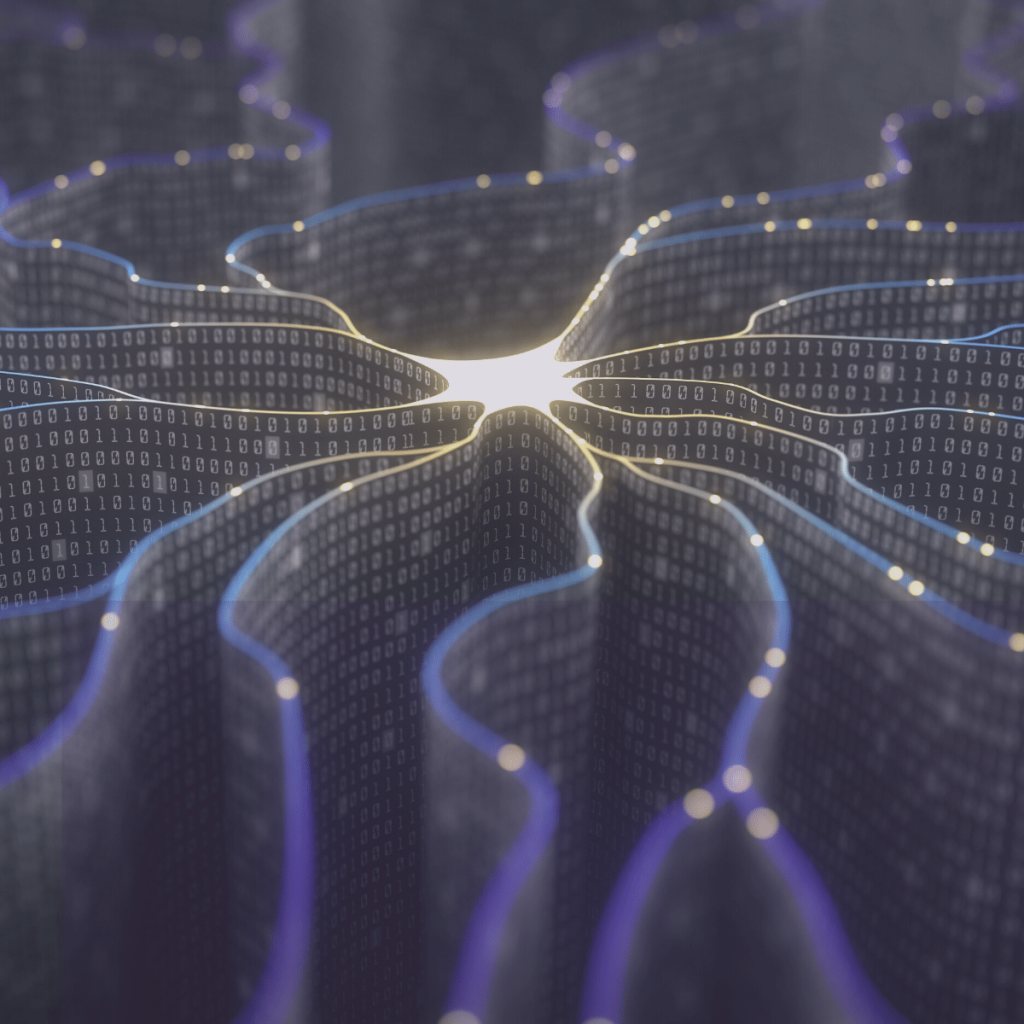AI and Machine Learning: How Vulnerabilities Impact Enterprise Cybersecurity
- Cayley Wetzig, Head of Marketing Communications
AI is all around us. It’s in the ads we see, the products we buy, and the way we interact with others. But what many people don’t realize is that AI is also impacting our cybersecurity in a big way.
When it comes to enterprise cybersecurity, AI and machine learning are being used to help organizations detect and respond to threats faster than ever before.
However, there are also new risks that come with these technologies.

What is Artificial Intelligence? Machine Learning?
These two terms are often used interchangeably, but there is a subtle difference.
Artificial intelligence (AI)
Artificial Intelligence is a broad term that refers to the broader idea of the ability of a computer or machine to learn and perform tasks that would typically require human intelligence, such as visual perception, natural language understanding, and decision-making.
Machine learning (ML)
Machine Learning is a subset of AI that focuses on giving computers the ability to learn and improve their performance over time on their own from experience, without being explicitly programmed. It works by feeding computers data and then using algorithms to enable the machine to learn from that data.
The technological advancements in AI have led to its adoption in various industries, including healthcare, education, finance, and marketing. It has proven to be the most effective technology for all sorts of advances in modern times.
Today, AI is present in many areas of our lives, from the personal assistants on our phones to the facial recognition software in our security cameras. And as AI continues to evolve, we can expect to see it increasingly being used in cybersecurity.
AI vs. Cybersecurity: Which is Better?
The answer to this question is not so simple. Cybersecurity is the practice of protecting internet-connected networks, systems, and devices from digital attacks. These attacks can come in many forms, such as viruses, malware, phishing scams, and ransomware attacks.
AI, on the other hand, is a tool that we can use to help improve cybersecurity by making it more effective and efficient. For example, we can use AI to help identify patterns in data that may indicate a potential threat. AI can also be used to automate repetitive tasks, such as monitoring and responding to security alerts.

However, cyber attackers can also leverage AI to launch more sophisticated attacks by learning from data to understand potential targets and vulnerabilities better. In addition, AI can be used to create fake news stories or create websites that look like legitimate sites but are actually phishing scams designed to steal sensitive data.
The bottom line is that AI is a powerful tool that can be used for good or ill when it comes to cybersecurity. Organizations need to understand the risks and benefits of AI before adopting it into their security strategy.
5 Ways AI and ML are Improving Cybersecurity
There are many ways in which AI and ML are being used to improve cybersecurity. Here are five of the most significant:
1. Automating Security Tasks
One main way AI improves cybersecurity is by automating repetitive tasks, such as monitoring and responding to security alerts. This frees up time for security teams to focus on more complex tasks and allows them to be more proactive in responding to potential threats.
2. Enhancing Threat Detection
AI is also being used to help identify patterns in data that may indicate a potential threat. By analyzing large data sets, AI can quickly identify anomalies that could be indicative of an attack or fraud. This allows security teams to investigate and respond to potential threats more quickly.
3. Enhancing Malware Detection
AI is being used to improve the detection of malware. By analyzing large data sets, AI can quickly identify patterns that may be indicative of malicious activity and flag them for further investigation. This helps to ensure that new and unknown malware is quickly identified and removed from systems.
4. Ransomware Protection
Ransomware is a type of malware that encrypts a victim’s files and demands a ransom be paid in order to decrypt the files. It is estimated that in 2022, a ransomware attack took place every 2 seconds.
AI bots can detect ransomware before it encrypts a victim’s files and can even thwart the attacks by quickly identifying and stopping malicious activity. It can automate patch management to prevent known vulnerabilities from being exploited.
5. Spam Filters and Phishing Protection
Phishing is a type of online fraud involving sending emails that appear to be from a legitimate source to trick victims into disclosing sensitive information, often resulting in identity theft or a data breach.
Nearly 36% of data breaches in 2022 involved phishing, and a recent study from IBM reported that the average cost of a data breach is now at $4.35 million. AI can help identify and filter out spam emails and detect phishing emails before they reach their intended targets so they can be blocked.
AI is quickly becoming a vital tool in the fight against cybercrime, and these are just a few of the ways in which it is being used to improve cybersecurity. As AI continues to evolve, we will likely see even more innovative and effective ways in which it can be used to protect our networks, systems, and devices from digital attacks.
Shortcomings of Machine Learning in Cybersecurity
While machine learning has great potential for cybersecurity, it also has some limitations.
Data Quality
One of the main limitations is that machine learning algorithms are only as good as the data they are trained on. If the training data is not representative of the real-world data, then the algorithm will not be able to generalize properly and may make inaccurate predictions. And if the data is biased, then the algorithm will likely be biased as well.
Adversarial Examples
Another limitation is that machine learning algorithms can be easily fooled if they are not properly designed. For example, an attacker could create a data set that is specifically designed to fool a machine learning algorithm into thinking that it is something else. This is known as adversarial machine learning.
Data Privacy
Another concern is data privacy. When training machine learning algorithms on sensitive data, there is a risk that the data could be leaked or stolen. And if the data is used to train a machine learning algorithm that is then deployed in the real world, there is a risk that the sensitive data could be exposed to the public.
Quantity of Data
Finally, machine learning algorithms are designed to find patterns in data, so they require a lot of data to learn so they can be effective. This can be a problem for small organizations that do not have access to large data sets.
It can also be a problem for organizations that deal with sensitive data, as they may not be able to share their data sets with the public in order to train machine learning algorithms. But on the flip side, if the data set is too large, the algorithm may find patterns that are not actually there, which can lead to false positives.

These are just some of the limitations of machine learning for cybersecurity. As machine learning algorithms continue to be developed and improved, these limitations will likely be addressed. But for now, organizations need to be aware of these limitations and mitigate them as best as they can.
Why AI Vulnerability Management Matters in 2023
As digital transformation projects continue to increase in number and scale, so too will the number of cyberattacks. And as the sophistication of attacks increases, traditional security approaches will become increasingly ineffective.
AI-based vulnerability management solutions can help organizations keep up with the ever-changing landscape of cyber threats. They can also help organizations automate their security processes and improve their overall security posture.
This is why investing in AI vulnerability management is so important, and it is why it should be a top priority for organizations as a critical part of any organization’s cybersecurity strategy in 2023 and beyond.
Hands-on Machine Learning for Cybersecurity
Machine learning algorithms are only as good as the data they are trained on, so it is important to use high-quality, representative, real-life data sets when training machine learning algorithms for cybersecurity. And to offset the shortcomings of machine learning algorithms, it is important to use them in conjunction with human intelligence.
Human intelligence can be used to verify the results of machine learning algorithms, eliminate false positives, and help make decisions about which actions to take in response to an alert.
When used together, machine learning and human intelligence can be a powerful combination that can help organizations improve their cybersecurity posture and better defend themselves against the ever-increasing number of cyber threats.
Conclusion
As machine learning algorithms continue to be developed and improved, they will become more and more effective at cybersecurity. However, they will also become more effective at cyberattacks too, and because of the nature of machine learning algorithms that require a lot of data to be effective, AI brings an increased risk to data privacy and vulnerability to ransomware attacks.
Organizations need to be aware of these risks and take steps to mitigate them, which is why they need to keep investing in AI vulnerability management to stay ahead of the curve and make machine learning a valuable tool in their cybersecurity arsenal.
Protect Your Organization from Phishing
Explore More Resources
- Article, Blog
- Article, Blog
- Article, Blog
- Article, Blog
Your Trusted Source for Cyber Education
Sign up for ThriveDX's quarterly newsletter to receive information on the latest cybersecurity trends, expert takes, security news, and free resources.

